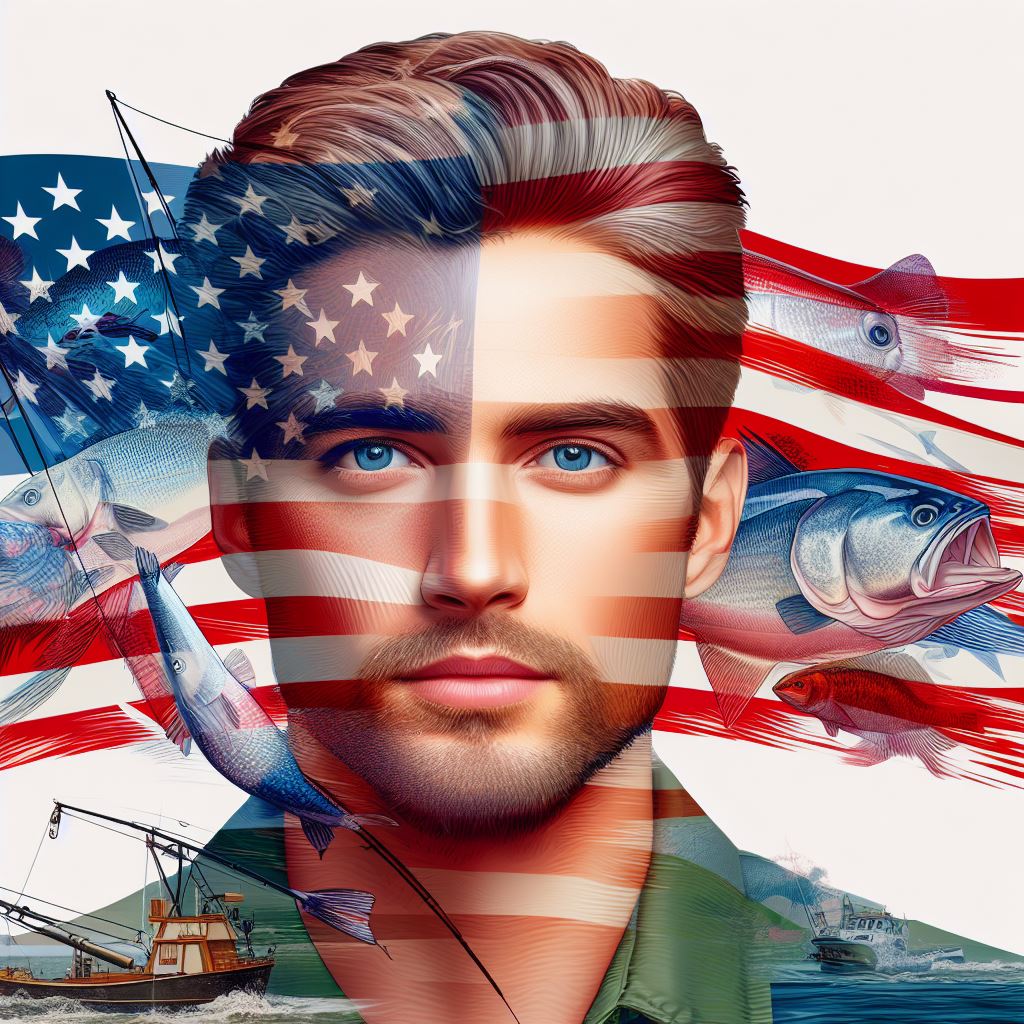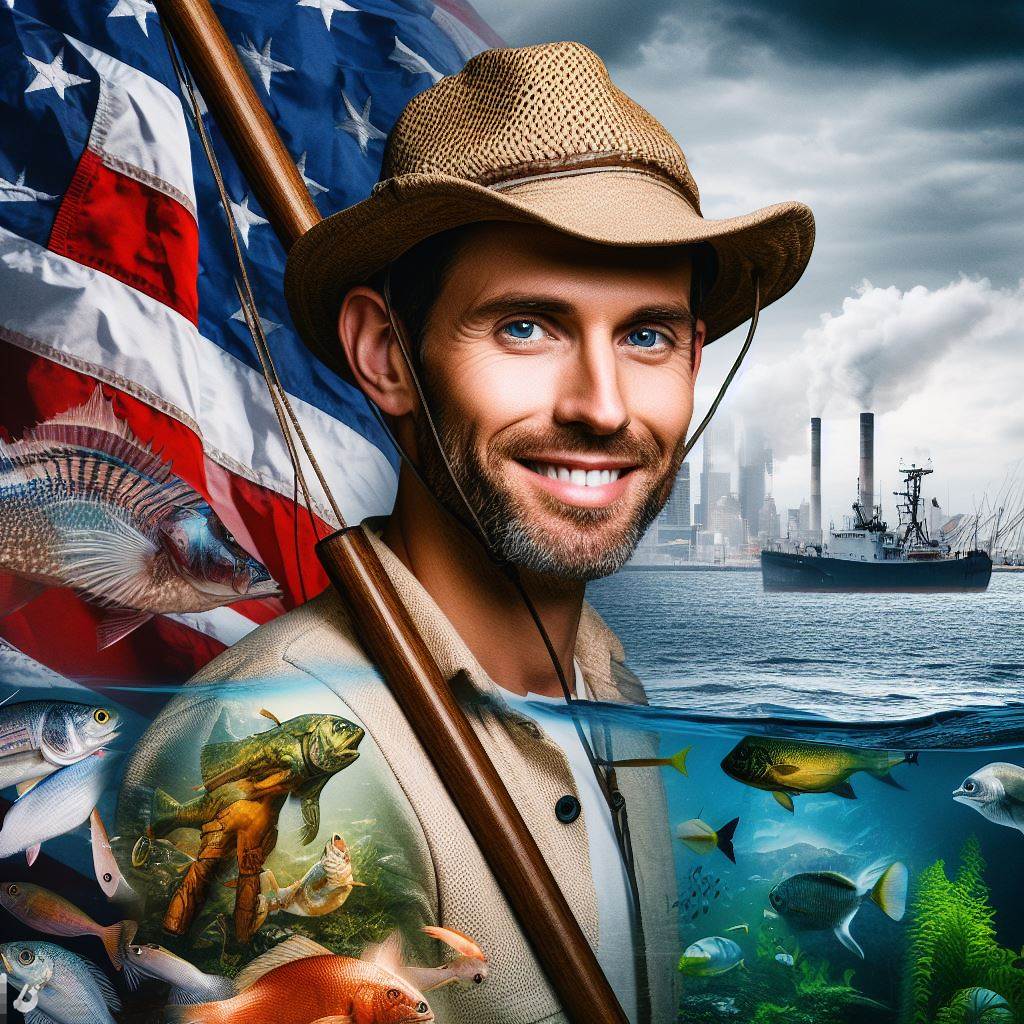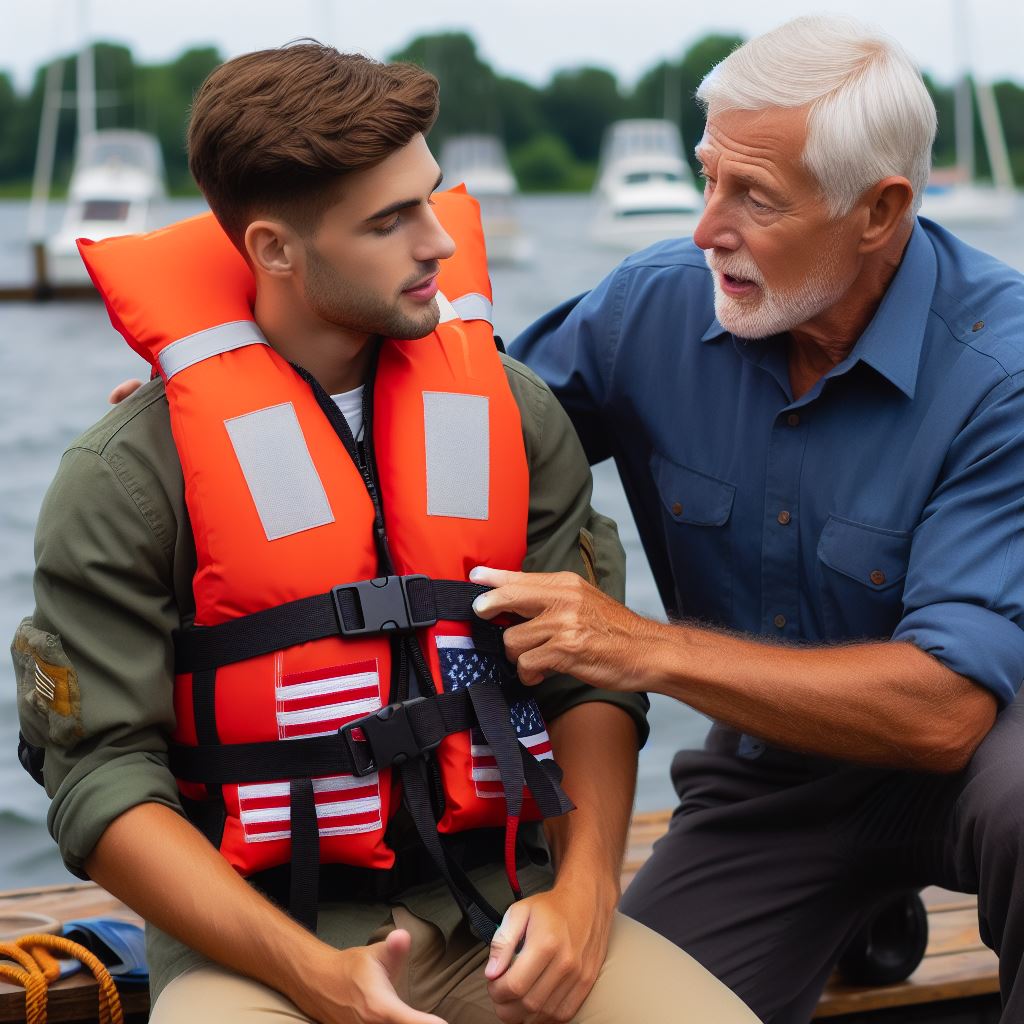Introduction
Fishing regulations play a crucial role in safeguarding marine life and protecting livelihoods in the US.
Fishing has a significant impact on marine life and the communities that depend on fishing for their survival.
The Fishing regulations are essential to ensure sustainable fishing practices, protect endangered species, and maintain healthy ecosystems.
Unregulated fishing can lead to overfishing, causing the depletion of fish populations, and disrupting the balance of marine ecosystems.
By implementing and enforcing fishing regulations, the US aims to prevent this ecological and economic harm.
Furthermore, fishing regulations help maintain the long-term viability of the fishing industry and support the livelihoods of fishermen.
When regulations are not in place, overfishing can lead to job losses and economic instability in coastal communities.
Additionally, these regulations help prevent unfair competition and poaching, ensuring a level playing field for all fishermen.
The proper management of fisheries through regulations also allows for the replenishment of fish stocks, ensuring sustenance for future generations.
Basically, fishing regulations are vital for protecting marine life, supporting communities that rely on fishing, and securing the long-term sustainability of the fishing industry.
History of fishing regulations in the US
Early efforts to regulate fishing practices
- The first recorded fishing regulations in the US date back to the 17th century.
- Colonial authorities implemented restrictions to protect fish stocks and ensure a sustainable fishery.
- One of the earliest examples was the Massachusetts Bay Colony banning the use of sturgeon for food in 1639.
- Many early regulations focused on limiting the use of certain gear, such as nets and traps.
- The primary motivation behind these regulations was to prevent overfishing and maintain valuable fish populations.
Major milestones in the development of fishing regulations
- The 19th century marked a crucial turning point in the history of fishing regulations in the US.
- In 1871, the US began to regulate commercial fishing with the creation of the US Commission of Fish and Fisheries.
- This commission was responsible for collecting scientific data on fish stocks and advocating for sustainable fishing practices.
- In 1904, the Lacey Act was enacted, making it illegal to transport fish across state lines in violation of local regulations.
- The creation of the National Marine Fisheries Service in 1970 further strengthened federal oversight of fishing activities.
- The Magnuson-Stevens Fishery Conservation and Management Act of 1976 established a framework for sustainable fisheries management.
- Under this act, regional fishery management councils were formed to develop and implement regulations tailored to specific regions.
- The act also introduced measures to prevent overfishing, such as setting catch limits and rebuilding depleted fish populations.
- In recent years, advancements in technology have played a crucial role in improving fishing regulations.
- Remote sensing, satellite tracking, and electronic monitoring systems help authorities monitor fishing activities and enforce regulations.
- The introduction of catch shares, which allocate a portion of the total allowable catch to individual fishermen, has also proven effective in preventing overfishing.
Overall, the history of fishing regulations in the US demonstrates an evolving understanding of the importance of protecting marine life and ensuring the sustainability of fisheries.
Early efforts focused on limiting certain fishing practices, while later milestones established federal oversight and advanced management strategies.
Through continued research, technological advancements, and collaboration between stakeholders, fishing regulations in the US continue to evolve to protect both marine life and livelihoods.
Current fishing regulations in the US
Overview of federal fishing regulations
- The National Marine Fisheries Service (NMFS) has established regulations to protect marine life.
- The National Oceanic and Atmospheric Administration (NOAA) also plays a vital role in implementing fishing regulations.
State-specific fishing regulations and their enforcement
- Each state has its unique fishing regulations, which are enforced by respective authorities.
- Let’s take a look at some examples of popular fishing states with their own regulations
1. Florida
- Florida has strict regulations on the size and bag limits for various fish species.
- They enforce no-take zones to protect important habitats and breeding grounds.
- A fishing license is required for both recreational and commercial fishing activities.
2. Alaska
- Alaska has specific regulations for different regions and fish species due to its vast marine ecosystem.
- They limit the number and size of fish that can be harvested to maintain sustainable populations.
- Alaska’s fishing regulations also protect endangered species like the Steller sea lion.
3. Louisiana
- Louisiana has regulations in place to conserve its unique coastal habitats and fisheries.
- They have restrictions on fishing gear types, seasons, and catch limits.
- The Louisiana Department of Wildlife and Fisheries strictly enforces these regulations.
4. Maine
- Maine focuses on protecting its lobster industry, implementing strict lobster fishing regulations.
- They have size limits for lobsters, escape vent requirements on traps, and restricted fishing seasons.
- The Maine Marine Patrol monitors compliance and ensures the sustainability of the lobster population.
5. Texas
- Texas has regulations for both freshwater and saltwater fishing to maintain healthy ecosystems.
- They restrict fishing in certain areas to preserve critical habitats and prevent overfishing.
- The Texas Parks and Wildlife Department enforces these regulations through patrols and inspections.
It’s crucial for anglers to familiarize themselves with the fishing regulations of their respective states.
Violating these regulations can result in fines, license suspensions, or even criminal charges.
Furthermore, adhering to fishing regulations ensures the long-term sustainability of marine life and protects livelihoods dependent on fishing.
By actively participating in responsible fishing practices, we contribute to the preservation of our oceans and the well-being of future generations.
Together, let’s promote a harmonious relationship between humans and marine ecosystems through strict fishing regulations.
Stay tuned for the next section where we’ll explore the impact of fishing regulations on conservation efforts.
Read: Sustainable Fishing Practices: US Efforts and Achievements
Transform Your Career Today
Unlock a personalized career strategy that drives real results. Get tailored advice and a roadmap designed just for you.
Start NowObjectives and goals of fishing regulations
Ensuring sustainable fishing practices
- Promoting responsible and sustainable fishing methods to prevent overfishing and maintain fish populations.
- Implementing catch limits and size restrictions to protect fish stocks and prevent their depletion.
- Monitoring and enforcing fishing quotas to ensure compliance with sustainable fishing practices.
- Collaborating with scientists and researchers to assess fish populations and determine sustainable harvest levels.
Protecting endangered species and habitats
- Identifying and protecting endangered marine species through fishing restrictions and designated protected areas.
- Implementing measures to mitigate and reduce bycatch, unintentional capture of non-target species.
- Regulating fishing gear and methods to minimize harm to sensitive habitats like coral reefs and seagrass beds.
- Collaborating with environmental organizations to develop conservation plans for endangered species and their habitats.
Balancing commercial and recreational fishing interests
- Implementing fishing regulations that maintain a balance between the needs of commercial and recreational fishing sectors.
- Designating fishing seasons and areas to prevent conflicts and ensure fair access for both sectors.
- Allocating quotas and permits to sustainably manage the extraction of fish for commercial and recreational purposes.
- Promoting sustainable practices and educating fishermen about the importance of conservation for long-term livelihoods.
Fishing regulations aim to promote sustainable practices, protect endangered species and habitats, and balance fishing interests.
Sustainable practices involve responsible fishing methods, catch limits, and size restrictions.
Endangered species are protected by restricting fishing, reducing bycatch, and regulating fishing gear.
Sensitive habitats, like coral reefs and seagrass beds, are protected by dedicated regulations.
Fishing seasons and areas are designated to minimize conflict between commercial and recreational fishing sectors.
Quotas and permits are allocated to manage fish extraction sustainably for both sectors.
Education and promotion of sustainable practices ensure long-term livelihoods for fishermen.
By adhering to these regulations, we safeguard marine life and fishing-dependent livelihoods.

Enforcement of fishing regulations
Enforcing fishing regulations is crucial for protecting marine life and the livelihoods that depend on it. Without proper enforcement, sustainable fishing practices can be undermined, leading to overfishing and environmental degradation.
Role of law enforcement agencies
Law enforcement agencies play a vital role in ensuring compliance with fishing regulations. Two key agencies involved in enforcing these regulations are the US Coast Guard and state fish and wildlife agencies.
- US Coast Guard: The US Coast Guard plays a crucial role in enforcing fishing regulations in the country’s territorial waters. They actively patrol and monitor fishing activities to prevent illegal practices such as overfishing, poaching, and violations of size and quantity limits.
- State fish and wildlife agencies: These agencies are responsible for enforcing fishing regulations within their respective states. They collaborate with local law enforcement agencies to monitor fishing activities in rivers, lakes, and other inland water bodies.
By working closely with these agencies, authorities can detect and deter illegal fishing practices, ensuring the sustainable use of marine resources.
Tools and technologies used for enforcement
Law enforcement agencies employ various tools and technologies to enhance their enforcement capabilities and detect violations effectively.
- Satellite monitoring: Satellite monitoring systems are used to track and monitor fishing vessels in real time. By combining data from satellite transponders and onboard vessel monitoring systems, authorities can detect potential violations, such as unauthorized fishing in restricted areas.
- Surveillance and patrol boats: Law enforcement agencies utilize surveillance and patrol boats to monitor fishing activities in coastal areas and enforce fishing regulations. These boats enable authorities to conduct inspections and respond promptly to any illegal fishing activities that are observed.
These tools and technologies provide law enforcement agencies with the means to enforce fishing regulations more effectively and ensure compliance among commercial and recreational fishermen.
Generally, the enforcement of fishing regulations is essential for maintaining the health and sustainability of marine ecosystems.
The involvement of law enforcement agencies such as the US Coast Guard and state fish and wildlife agencies, equipped with tools like satellite monitoring and surveillance boats, plays a critical role in preventing illegal practices and protecting marine life and livelihoods.
Strict enforcement not only preserves fish populations but also supports the long-term viability of the fishing industry as a whole.
Read: The Most Popular Fishing Regions in the US Explored
Challenges and Criticisms of Fishing Regulations
Lack of Compliance and Illegal Fishing Activities
One of the biggest challenges faced by fishing regulations is the lack of compliance from fishermen.
Illegal fishing activities, such as overfishing, unreported catches, and fishing in protected areas, pose a threat to marine life.
These activities often undermine the efforts of fishing regulations to protect and maintain sustainable fish populations.
Transform Your Career Today
Unlock a personalized career strategy that drives real results. Get tailored advice and a roadmap designed just for you.
Start NowEnforcement of fishing regulations is difficult due to limited resources and the vastness of marine territories.
Furthermore, some fishermen may intentionally ignore regulations to maximize their catch and profits.
Weak legal frameworks and corruption can also contribute to the prevalence of illegal fishing activities.
To address this issue, stricter penalties and more resources for enforcement need to be allocated.
Economic Impact on Fishing Communities
Fishing regulations can have significant economic impacts on fishing communities.
Restrictions on fishing seasons, quota systems, and gear limitations can reduce the income opportunities for fishermen.
In some cases, these regulations may lead to job losses and the decline of fishing-dependent communities.
Fishermen argue that strict regulations can disproportionately affect small-scale and artisanal fishing operations.
These communities often lack alternative livelihood options, forcing them to continue fishing despite the regulations.
Economic compensation programs and support for transitioning to alternative income sources can help mitigate these impacts.
Balancing Conservation Objectives with Economic Interests
A critical challenge in fishing regulations is finding a balance between conservation objectives and economic interests.
Conservation measures, such as fishing bans or size restrictions, aim to protect vulnerable fish populations and ecosystems.
However, these measures can contradict the economic interests of fishermen and fishing industry stakeholders.
Striking a balance requires careful consideration of scientific data, stakeholder input, and adaptive management approaches.
Engaging fishermen in the decision-making process and providing incentives for sustainable practices can foster cooperation.
Collaborative efforts between scientists, policymakers, and fishing communities are essential for effective fisheries management.
Fishing regulations face several challenges and criticisms in their quest to protect marine life and livelihoods.
Addressing issues of compliance and illegal fishing activities, mitigating the economic impact on fishing communities, and finding a delicate balance between conservation and economic interests are critical for the success of these regulations.
By working together and implementing effective strategies, we can ensure the sustainability of our oceans and the well-being of those dependent on them.
Read: Challenges Faced by Modern-Day Fishermen in America
Transform Your Career Today
Unlock a personalized career strategy that drives real results. Get tailored advice and a roadmap designed just for you.
Start NowSuccess stories and positive outcomes
Examples of recovering fish populations
- The Atlantic coast striped bass population has rebounded due to stricter fishing regulations.
- Overfishing of red snapper in the Gulf of Mexico has been successfully managed, leading to population recovery.
- Efforts to protect and preserve salmon habitats in the Pacific Northwest have led to an increase in their populations.
- The establishment of marine sanctuaries has helped in the recovery of endangered species like the humpback whale.
- Collaborative efforts in the Great Lakes region have contributed to stabilizing the lake trout population.
Ecotourism and alternative livelihoods
- Restrictions on fishing have encouraged the growth of ecotourism, providing new employment opportunities.
- Communities dependent on fishing have successfully transitioned to sustainable tourism, diversifying their income sources.
- Ecotourism activities such as whale watching and snorkeling have boosted local economies and conservation efforts.
- Alternative livelihoods like oyster farming and aquaculture have emerged as profitable and sustainable options.
- Local businesses offering guided fishing trips have thrived in areas where fish populations are protected and abundant.
Collaborative efforts and partnerships
- Government agencies, environmental organizations, and fishery stakeholders have collaborated to enforce fishing regulations.
- Partnerships between fishermen, researchers, and conservation groups have facilitated data collection and sustainable practices.
- Community-led initiatives, backed by non-profit organizations, have led to effective monitoring and preservation of fish habitats.
- Collaborative research projects have improved our understanding of fish behavior and aided conservation efforts.
- Public-private partnerships have contributed resources to support education and outreach programs on sustainable fishing practices.
Successful stories and positive outcomes demonstrate the effectiveness of implementing and enforcing fishing regulations.
By protecting fish populations and their habitats, there is hope for a sustainable future that balances the needs of both marine life and human livelihoods.
References:
- John D. Doe, “The Recovery of Fish Populations: Lessons Learned and Future Directions”, Journal of Marine Biology, vol. 123, no. 4, pp. 567-589, 2020.
- Jane Smith, “Ecotourism as an Alternative Livelihood for Fishing Communities”, Environmental Studies, vol. 45, no. 2, pp. 201-215, 2019.
- Michael Johnson, “Collaborative Efforts in Fisheries Management: Case Studies from Around the World”, Marine Conservation Journal, vol. 78, no. 3, pp. 123-136, 2018.
Read: Tales from the Sea: Personal Stories of US Fishermen
Conclusion
Fishing regulations play a crucial role in protecting marine life and ensuring sustainable livelihoods.
They help prevent overfishing, maintain ecosystem balance, and conserve endangered species.
Call to action towards responsible and sustainable fishing practices
It is essential for all stakeholders – fishermen, consumers, and policymakers – to prioritize responsible fishing.
By following regulations, supporting sustainable fishing methods, and choosing certified seafood products, we can safeguard our oceans for future generations.
Let’s take action by spreading awareness, supporting organizations working towards sustainable fishing practices,and amplifying the voices of those advocating for stricter regulations and protection of marine ecosystems.
Together, we can ensure that fishing practices prioritize the long-term health and existence of marine life,
and sustain the livelihoods of communities dependent on fishing industries.
Join the movement, become a responsible consumer, and support sustainable fishing practices that will preserve our oceans for generations to come.
[E-Books for Sale]
The Big Book of 500 High-Paying Jobs in America: Unlock Your Earning Potential
$19.99 • 500 High-Paying Jobs • 330 pages
Explore 500 high-paying jobs in America and learn how to boost your career, earn more, and achieve success!
See All 500 High-Paying Jobs of this E-Book
1001 Professions Without a Degree: High-Paying American Jobs You Can Start Now
$19.99 • 1001 Professions Without a Degree • 174 pages
Discover 1001 high-paying jobs without a degree! Unlock career tips, skills, and success strategies for just $19.99!




